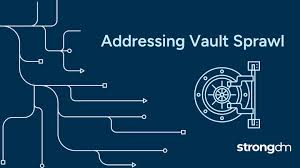In the digital age, the internet has become a vast repository of information, tools, and resources. Yet, hidden beneath its visible layers lies a complex underworld where sensitive financial data is stored, traded, and exploited. Among vclubshop these hidden corners are what some call “digital vaults”—underground repositories containing stolen or illicitly obtained credit card information. Understanding these digital vaults, their operations, and the risks associated with them is crucial for anyone concerned with cybersecurity, digital privacy, or financial safety.
In this article, we explore the hidden world of credit card resources, explaining how these digital vaults operate, why they are so dangerous, and what measures can be taken to protect against them.
What Are Digital Vaults?
Digital vaults are online repositories where large volumes of sensitive financial data, particularly credit card information, are stored. Unlike legitimate databases maintained by banks or financial institutions, these vaults are typically created and maintained by cybercriminals. They exist in hidden corners of the internet, such as the dark web, and are designed to be difficult to trace or access by law enforcement.
These vaults serve as the backbone for many types of financial crime, including identity theft, credit card fraud, and illegal online transactions. They are often structured similarly to legitimate e-commerce platforms, making it easier for buyers and sellers to navigate, select data, and conduct transactions.
How Digital Vaults Operate
The operation of digital vaults is highly organized and surprisingly sophisticated. They typically involve multiple layers of security to protect both the stored data and the identities of the people involved. Common features include encrypted communications, multi-factor authentication, and access control systems that limit who can view or download sensitive information.
Transactions are often conducted using cryptocurrencies, which provide an added layer of anonymity. Vendors may also employ reputation systems to encourage trustworthy behavior within the marketplace. Buyers rely on reviews, ratings, and transaction histories to select reliable sources, though these indicators can be manipulated or faked.
Sources of Credit Card Data
Credit card data found in digital vaults generally comes from various illegal methods. These include phishing attacks, malware infections, data breaches, and skimming devices at ATMs or point-of-sale terminals. vclubshop login Cybercriminals often combine data from multiple sources to create comprehensive profiles, which are then sold in bulk or individually.
Some vaults also contain additional personal information, such as full names, addresses, and social security numbers. This makes the data even more valuable, as it allows buyers to commit more extensive forms of identity theft, including opening new accounts or making unauthorized purchases.
The Market for Stolen Credit Cards
Digital vaults are not just storage repositories; they are part of a broader underground economy. Stolen credit card data is bought and sold on marketplaces that operate much like legitimate online stores. Prices vary based on the card’s issuing bank, credit limit, geographic location, and the amount of accompanying personal information.
High-value cards may sell for hundreds of dollars, while lower-value or older cards are often sold in bulk at a lower price. Speed is critical in this market. The longer stolen data remains unused, the greater the risk of detection and cancellation by the issuing bank, which reduces its value.
Techniques Used to Protect Digital Vaults
To protect these illicit resources, cybercriminals employ various techniques. Data is often encrypted and stored on servers located in countries with lax cybersecurity laws. Access may be restricted through invitation-only systems, and some vaults implement monitoring tools to detect law enforcement activity.
Additionally, sophisticated vault operators use multiple layers of servers and anonymization networks to make tracking and shutting down their operations more difficult. These measures make digital vaults some of the most challenging aspects of cybercrime for authorities to combat.
Risks for Users and Buyers
Participation in these digital vault networks carries significant risk. Buyers may be scammed by fake vendors, exposing their cryptocurrency payments without receiving the promised data. They also face the possibility of law enforcement infiltration, as undercover agents frequently monitor these marketplaces.
For vendors, the stakes are even higher. Running or accessing a digital vault is considered a criminal act in most jurisdictions, with severe legal consequences if caught. Even minor mistakes, such as poor encryption practices or revealing personal details, can lead to arrests and asset seizures.
Psychological Appeal of Digital Vaults
Understanding why individuals are drawn to digital vaults is key to understanding their persistence. For some, the appeal lies in the promise of quick financial gain. For others, it is the thrill of engaging in secretive or illicit activities. Online communities connected to these vaults often reinforce these behaviors, creating an environment where illegal activity is normalized.
The combination of financial incentive and psychological reinforcement ensures a steady flow of participants, maintaining the demand and operation of these hidden credit card resources.
Law Enforcement and Digital Vaults
Law enforcement agencies face considerable challenges in addressing the threats posed by digital vaults. Traditional investigative methods often fail in the anonymous, encrypted environment of the dark web. However, authorities have developed new strategies, including undercover operations, blockchain tracing, and international collaboration, to target these networks.
Successful takedowns often involve months of intelligence gathering. Agencies infiltrate marketplaces, track transactions, and eventually dismantle servers or arrest operators. While effective, these operations are time-consuming and do not eliminate the problem entirely, as new vaults and marketplaces quickly replace those that are shut down.
Protecting Yourself From Hidden Credit Card Threats
While most people will never interact with a digital vault directly, they can still be affected by the consequences. Identity theft, fraudulent purchases, and financial loss are real risks. Protecting yourself requires vigilance:
- Monitor credit card statements regularly for unusual activity.
- Use strong, unique passwords for all financial accounts.
- Enable multi-factor authentication whenever possible.
- Be cautious of phishing emails, suspicious links, or unknown websites.
- Consider credit monitoring services to detect unauthorized activity early.
Being proactive is the most effective way to minimize exposure to the risks created by digital vaults.
Conclusion
Digital vaults represent one of the most secretive and organized forms of cybercrime in the modern digital age. These hidden credit card resources are maintained by sophisticated networks of cybercriminals who exploit vulnerabilities in technology and human behavior. By understanding how digital vaults operate, the sources of the data they contain, and the risks they pose, individuals can better protect themselves and contribute to broader awareness of cybercrime.
The existence of these hidden repositories serves as a reminder that the digital world has layers that remain largely unseen. While the dark web and digital vaults may be hidden, their impact is real, affecting millions of people worldwide through fraud and identity theft. Awareness, education, and strong security practices are the best tools for mitigating these risks in an increasingly connected world.


